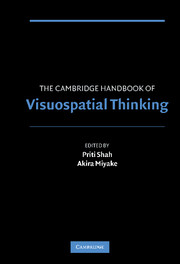Crossref Citations
This Book has been
cited by the following publications. This list is generated based on data provided by Crossref.
Bryan, R. Nick
2001.
Introduction to the Science of Medical Imaging.
p.
13.
Windschitl, Paul D.
and
Krizan, Zlatan
2005.
Contingent approaches to making likelihood judgments about polychotomous cases: the influence of task factors.
Journal of Behavioral Decision Making,
Vol. 18,
Issue. 4,
p.
281.
Passolunghi, Maria Chiara
and
Cornoldi, Cesare
2008.
Working Memory Failures in Children with Arithmetical Difficulties.
Child Neuropsychology,
Vol. 14,
Issue. 5,
p.
387.
Peters, Ellen
Bostrom, Ann
and
Cutter, Susan
2008.
Risk Assessment, Modeling and Decision Support.
Vol. 14,
Issue. ,
p.
295.
Passolunghi, M. Chiara
Mammarella, Irene C.
and
Altoè, Gianmarco
2008.
Cognitive Abilities as Precursors of the Early Acquisition of Mathematical Skills During First Through Second Grades.
Developmental Neuropsychology,
Vol. 33,
Issue. 3,
p.
229.
Bostrom, Ann
Anselin, Luc
and
Farris, Jeremy
2008.
Visualizing Seismic Risk and Uncertainty.
Annals of the New York Academy of Sciences,
Vol. 1128,
Issue. 1,
p.
29.
Fabrikant, Sara Irina
Hespanha, Stacy Rebich
and
Hegarty, Mary
2010.
Cognitively Inspired and Perceptually Salient Graphic Displays for Efficient Spatial Inference Making.
Annals of the Association of American Geographers,
Vol. 100,
Issue. 1,
p.
13.
Hullman, Jessica
Adar, Eytan
and
Shah, Priti
2011.
The impact of social information on visual judgments.
p.
1461.
Benacka, Jan
2011.
Cutting solid figures by plane – analytical solution and spreadsheet implementation.
International Journal of Mathematical Education in Science and Technology,
p.
1.
Wang, Zu Hao
Wei, Silin
Ding, Wei
Chen, Xiuyun
Wang, Xiaonan
and
Hu, Kaiyan
2012.
Students' Cognitive Reasoning of Graphs: Characteristics and progression.
International Journal of Science Education,
Vol. 34,
Issue. 13,
p.
2015.
Wong, Kok-Seng
and
Kim, Myung-Ho
2012.
A Privacy-Preserving Biometric Matching Protocol for Iris Codes Verification.
p.
120.
Crouser, R. J.
and
Chang, R.
2012.
An Affordance-Based Framework for Human Computation and Human-Computer Collaboration.
IEEE Transactions on Visualization and Computer Graphics,
Vol. 18,
Issue. 12,
p.
2859.
Pohl, Margit
Smuc, Michael
and
Mayr, Eva
2012.
The User Puzzle—Explaining the Interaction with Visual Analytics Systems.
IEEE Transactions on Visualization and Computer Graphics,
Vol. 18,
Issue. 12,
p.
2908.
Wong, Kok-Seng
and
Kim, Myung Ho
2014.
On private Hamming distance computation.
The Journal of Supercomputing,
Vol. 69,
Issue. 3,
p.
1123.
Owens, Kay
2015.
Visuospatial Reasoning.
Vol. 111,
Issue. ,
p.
1.
Owens, Kay
2015.
Visuospatial Reasoning.
Vol. 111,
Issue. ,
p.
223.
Kong, Xiang-zhen
Song, Yiying
Zhen, Zonglei
and
Liu, Jia
2016.
Genetic Variation in S100B Modulates Neural Processing of Visual Scenes in Han Chinese.
Cerebral Cortex,
p.
bhv322.
Sinclair, Nathalie
Bartolini Bussi, Maria G.
de Villiers, Michael
Jones, Keith
Kortenkamp, Ulrich
Leung, Allen
and
Owens, Kay
2016.
Recent research on geometry education: an ICME-13 survey team report.
ZDM,
Vol. 48,
Issue. 5,
p.
691.
Ivanov, Rosen
2016.
An approach for microscopic path finding and obstacle avoidance for blind and visually impaired people.
p.
285.
Swedberg, Richard
2016.
Can You Visualize Theory? On the Use of Visual Thinking in Theory Pictures, Theorizing Diagrams, and Visual Sketches.
Sociological Theory,
Vol. 34,
Issue. 3,
p.
250.





